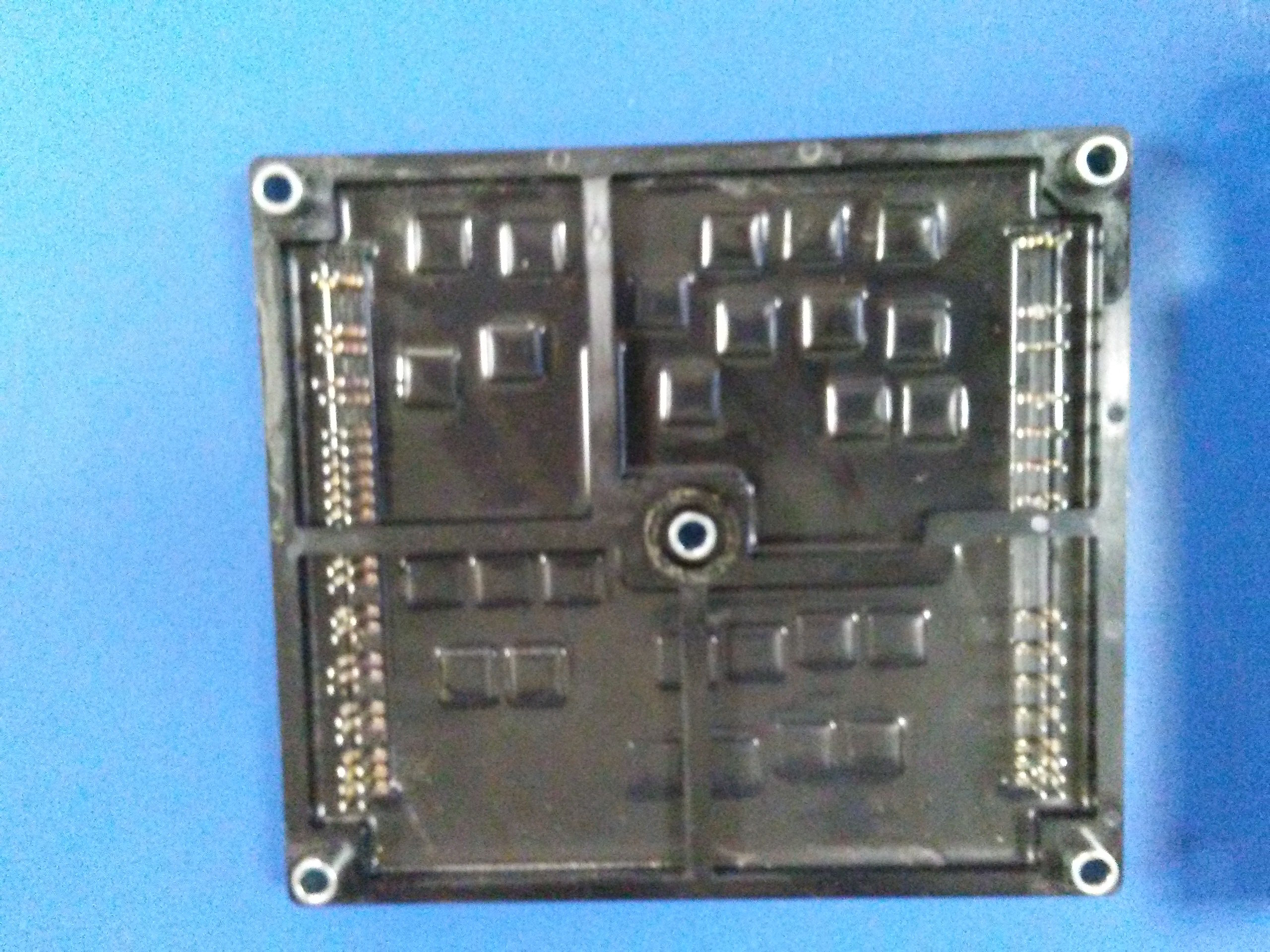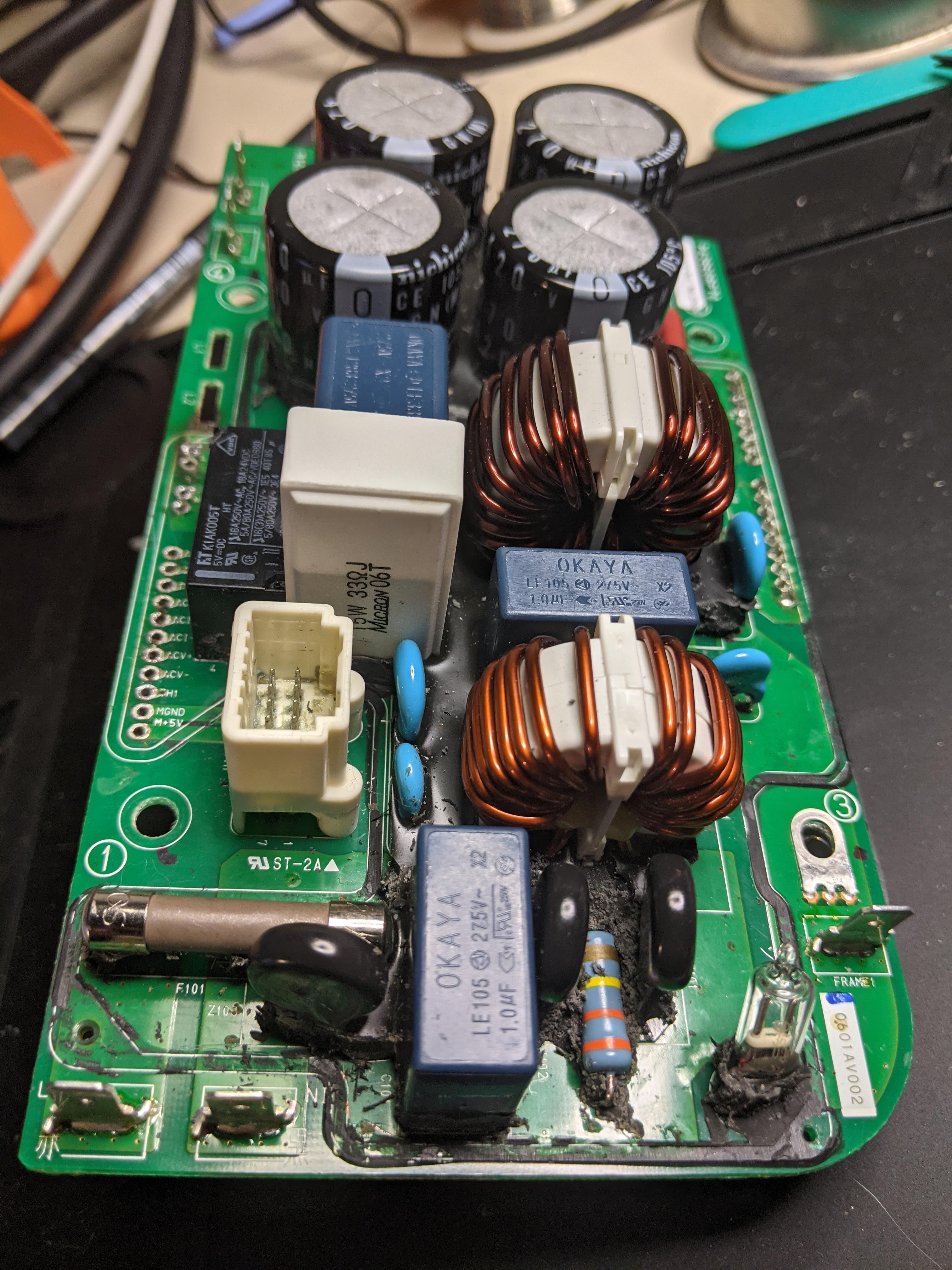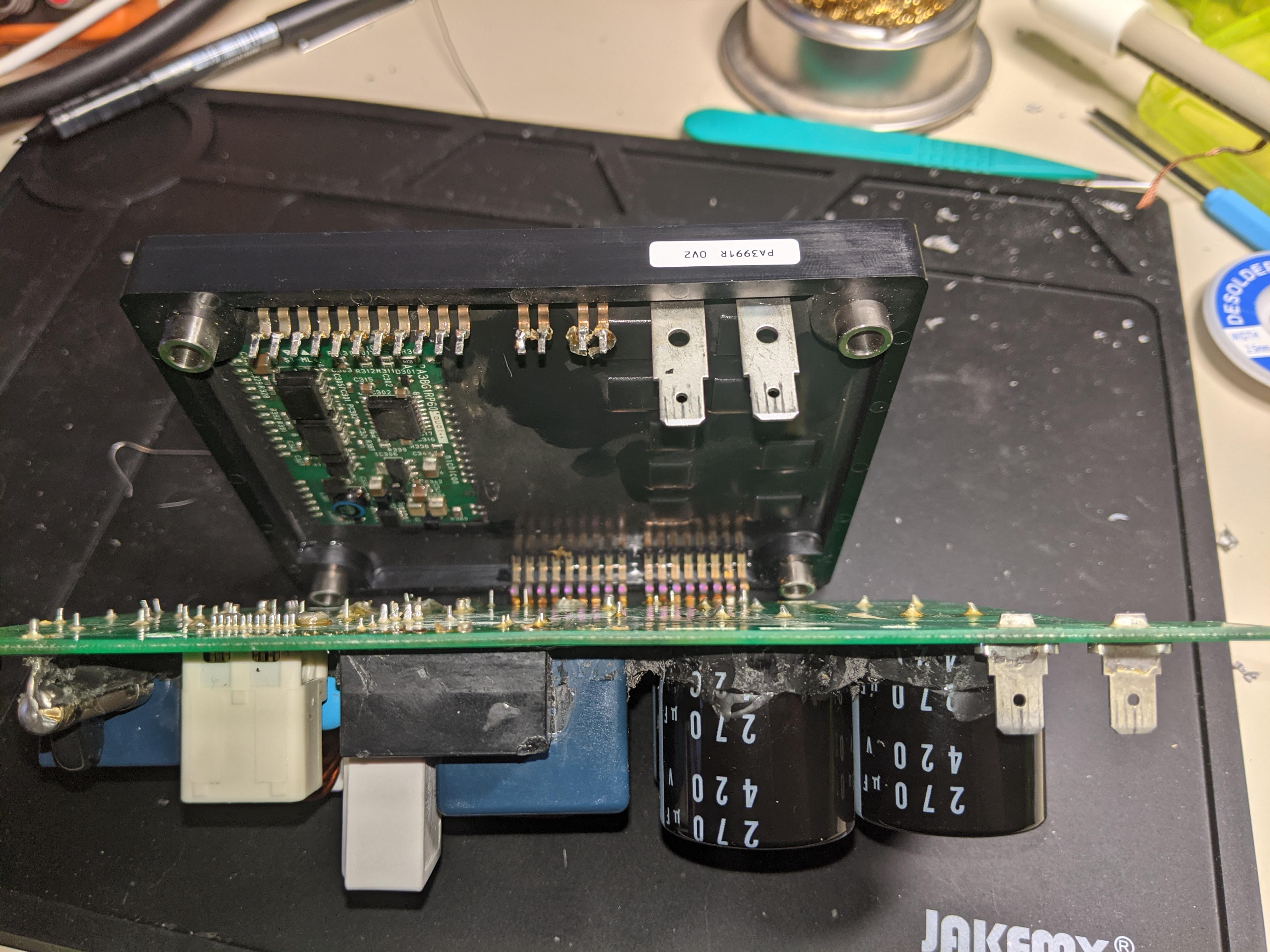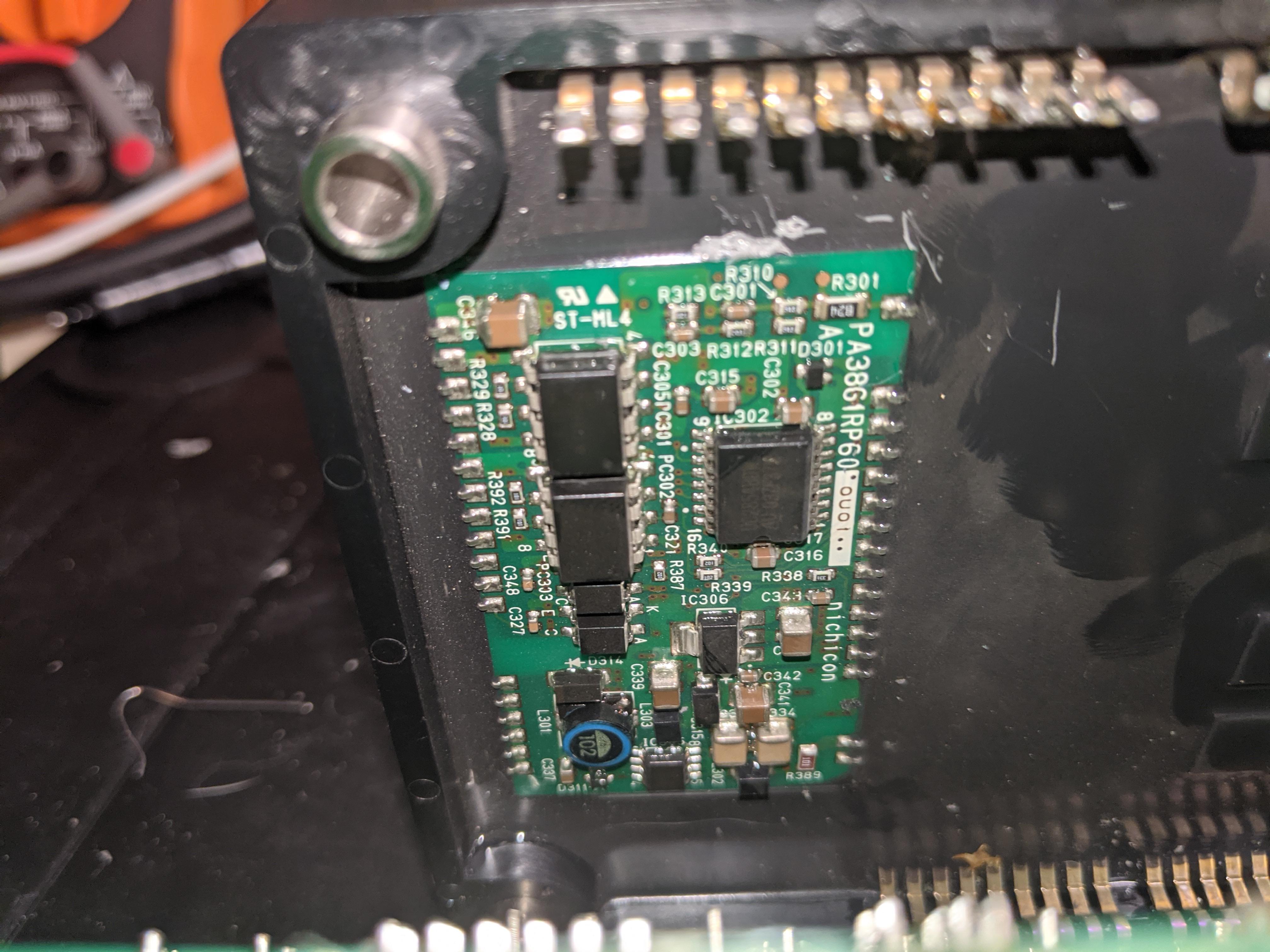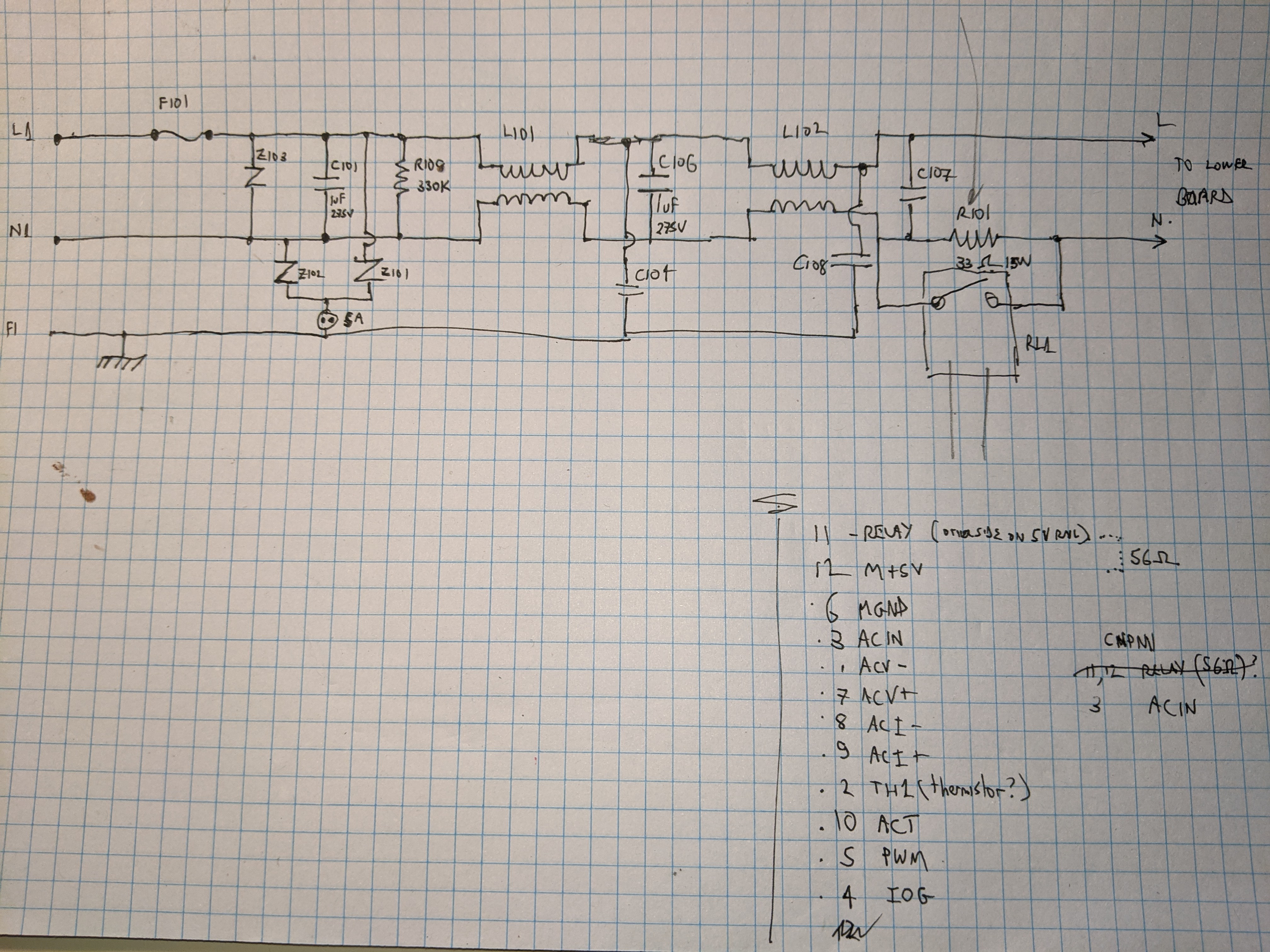I have had a useful day today, and have found my first actual failed component.
I spent a long time removing the bulk of the silicone potting from the top of the AC input board - not a hard job but requires care and concentration. This didn't reveal any blackened or cracking components, but it did show an interesting feature in the form of labelled connections down to the module below.
On one edge the connections are labelled (with my guesses for function alongside)
L (two, next to each other and common) - AC input live
N (two, next to each other, and common) - AC input neutral
ACIN - AC available signal back to controller card?
IOG ground for I/O?
PWM
ACT
ACI+ AC current sense positive
ACI- AC current sense negative
ACV+ AC voltage sense positive
ACV- AC voltage sense negative
TH1
MGND logic ground
M+5V 5V supply from controller board
The non mains connections map directly to 11 of the 12 pins in the connector running to the control board. The remaining pin goes to the AC switch relay coil - and the other side of the coil is common with the M+5V.
On the other edge there are two groups of terminals labelled P (x 8) and N (x 9) - presumably positive and negative DC outputs.
Next task was to desolder the top board from the base. This was a painful process, and so far I've only disconnected one side and gently bent the module open. There's another board with optoisolators and other circuitry sitting on top of the hard potting compound which contains the rectifiers etc.
Getting the module half open allowed me to check some more components on the top board, and this was where I found an actual problem. There is a single 33 ohm 15W wirewound resistor which bypasses the relay contacts (this is a little different from the later circuit) and it has failed open circuit. This resistor failing would give the symptoms I am seeing as no mains would ever make it down to the lower board to be sensed, though I'm a little concerned as to what made it fail. When the fault originally occurred (during charging) the earth leakage breaker on the power supply to the car also tripped, though it could be reset and has given no trouble since.
The resistor failing also explains why I saw no voltage on the fuse - wasn't a mistake after all. I was probing using a single multimeter probe with the other probe grounded to the chassis. The live feed must actually be on the N terminal (L/N swap), and because the resistor is open circuit no voltage ever made it to the fuse for me to measure.
Here's a closer look at the underlying board.
So, has been a good weekend. I'll get some beefier soldering equipment to desolder the second edge - all those commoned terminals are like a huge heatsink - source a spare resistor, and I have a lot of writing up and circuit drawing to do.
